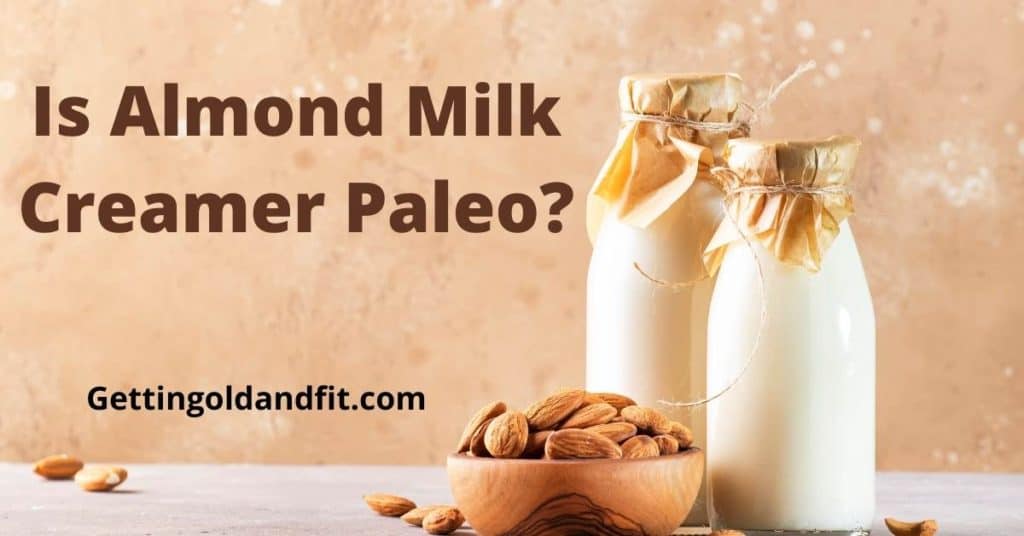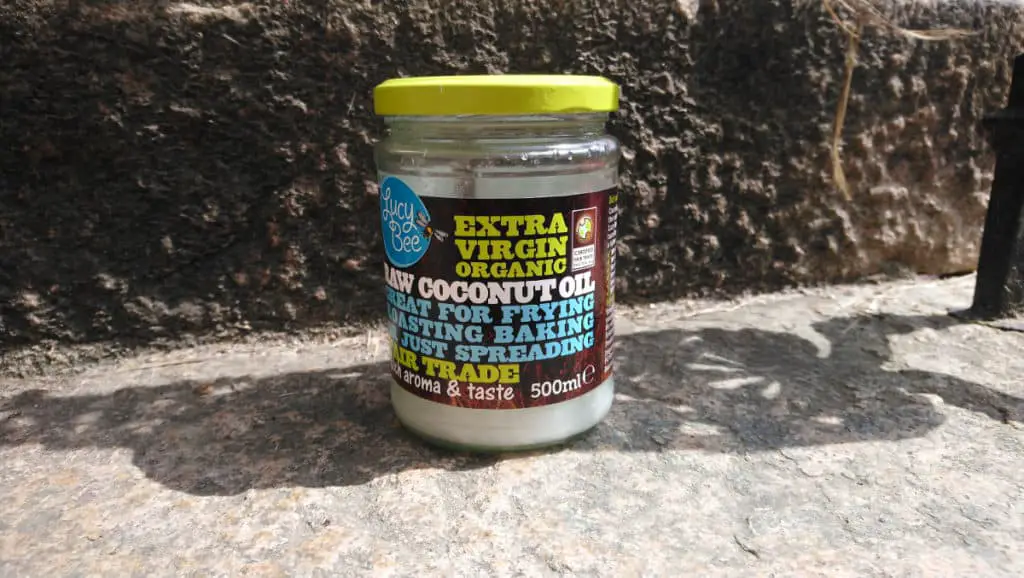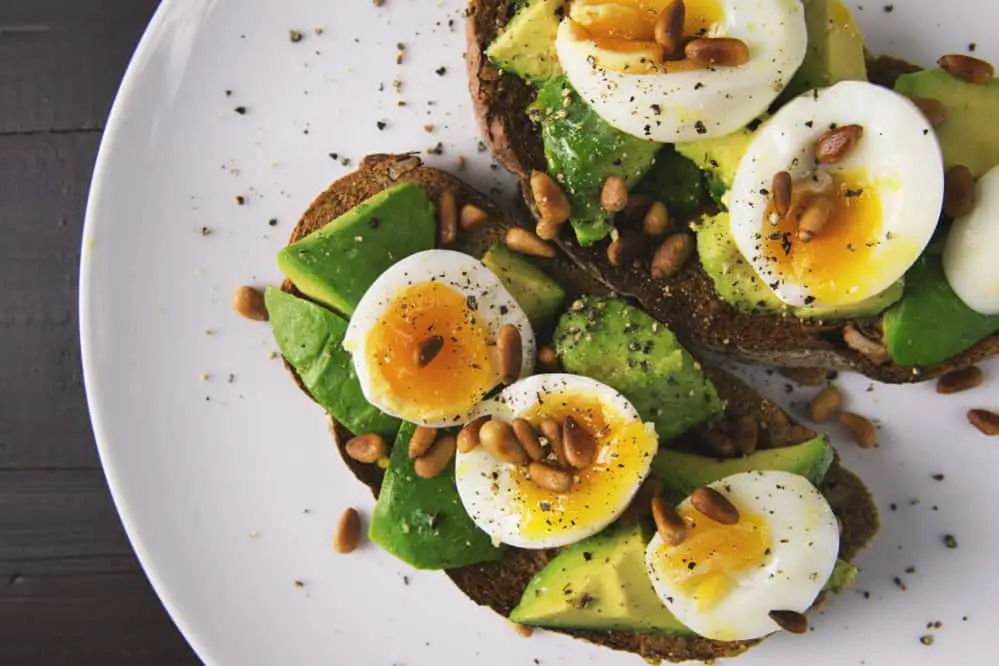The paleo diet conforms to what our ancestors in the Paleolithic era ate. Therefore, it idealizes the consumption of foods sourced naturally, i.e., through hunting and gathering.
On the list of paleo no-no’s is every form of dairy. That includes milk, cheese, butter, and if you’re an avid java lover, coffee creamer.
Luckily, it’s not all bad. Nuts like cashews and almonds ease the no-dairy rule by giving us milk, butter, cheeses, and—you guessed it—creamers. So, therefore, is almond milk creamer paleo, and can it replace regular dairy creamer?
Yes, that is the answer to that question. Almond cream is 100 % paleo and, like the milk, comes with a rich, nutty flavor. In addition, it’s rich in calcium and has a good amount of protein, fat, carbohydrates, and vitamins A and D.

Compared to most modern diets, the paleo diet is less restrictive as it isn’t too focused on controlling portions and counting calories. However, it does restrict refined foods like artificial sweeteners, vegetable oils, and grains—because according to our ancestors, food was edible long before we started growing and refining it.
Does Almond Cream Have Any Health Benefits?
Aside from the fact that it’s paleo, is there any reason why almond milk is good for you?
Yes, there are several. Almonds are some of the healthiest nuts around, known for their high nutritional value and low-calorie content.
Here are some of its other health benefits.
Almond Cream Is Good For Bone Health
Almond cream contains nearly twice as much calcium as dairy creamer made from whole milk. Calcium fortifies bones and teeth to reduce the chances of osteoporosis developing during old age.
As such, replacing your dairy creamer with almond cream is doing your bones and teeth a huge favor.
Lacks Any Saturated Fats, Cholesterol, And Lactose
Almond milk creamer is an excellent substitute for dairy milk creamer if you are lactose intolerant. Its lack of saturated fats, harmful cholesterol, and lactose makes it a healthy, vegan, non-dairy cream alternative for your coffee.
It Helps Keep Your pH Levels Neutral
Almonds are an alkaline food. Therefore, almond cream does not contribute to hyperacidity. Instead, it neutralizes acidity, resulting in osteoporosis, immune dysfunction, and insulin spikes if left unchecked.
Almonds May Improve Memory Function
Studies suggest that almonds could have a positive impact on memory due to their antioxidant-rich composition. They go as far as to highlight its significant effect on the prevention of dementia and Alzheimer’s—two of the most common forms of degenerative memory impairment.
Almond cream may have cancer-fighting antioxidants.
In a Paul Davis study, rats were less susceptible to cancerous colon tumors when given pieces of almond. The study suggested that the antioxidants in almonds are powerful enough to prevent the growth of cancerous cells.
How To Make Almond Cream At Home
Although you can buy readymade almond cream at a health foods store, you’re better off making it yourself. It only requires a couple of ingredients and takes minutes to complete once the almonds have soaked enough.
The best part about making it yourself is infusing your almond milk creamer with any flavor you prefer. Most people go with cinnamon, vanilla, lavender, honey, stevia, or coconut, but there are many combinations to try, so get ready to experiment!
Equipment
You will need:
- A blender
- A mason jar
- A nut bag
Ingredients
- Raw almonds
- Water
- Natural flavors and sweeteners (optional)
Procedure
- Soak the raw almonds in water for 12 – 24hrs. If you choose to soak them for longer than 12hrs, you’ll need to drain them and add fresh water at the 12-hour mark. Soaking removes the phytic acids in their skin and also gives their milk a creamy texture.
- Once they’re soaked enough, drain the water, then rinse the almonds in preparation for blending.
- In a blender, add the soaked almonds, fresh filtered water, and your natural flavors and sweeteners. For sweeteners, you can use maple syrup, honey, or stevia. Also, because you want a creamier texture, don’t add too much water. Instead, add just enough to give it the thickness and consistency of cream.
- Blend the mixture for about two minutes. Check to see if the consistency is smooth enough for your liking. Once ready, it’s time to begin the straining process.
- Place a nut milk bag over a bowl or measuring cup, then pour in the blended almond mixture. Make sure to squeeze out as much liquid from the pulp before discarding it. You can’t use a cheesecloth for this step because almond cream is thicker than milk, so that it won’t filter through well enough.
- Store your strained almond cream in a mason jar, seal the lid, and keep it refrigerated. Serve chilled for both hot and iced coffees—it goes just as well with either.
How Long Does Homemade Almond Cream Last?
If stored in a sealed container and kept refrigerated, almond cream can last up to three days. Therefore, you shouldn’t make it in large quantities as it doesn’t have a long shelf life.
Conclusion
Hopefully, all you coffee lovers out there will be happy to know that you can still enjoy a nice cup of coffee with creamer, also with the added health benefits of almonds.
The other big bonus is it is easy to make and will have only natural ingredients as you know what is going into the recipe. You will also be able to try mixing with different spices and natural flavoring.



